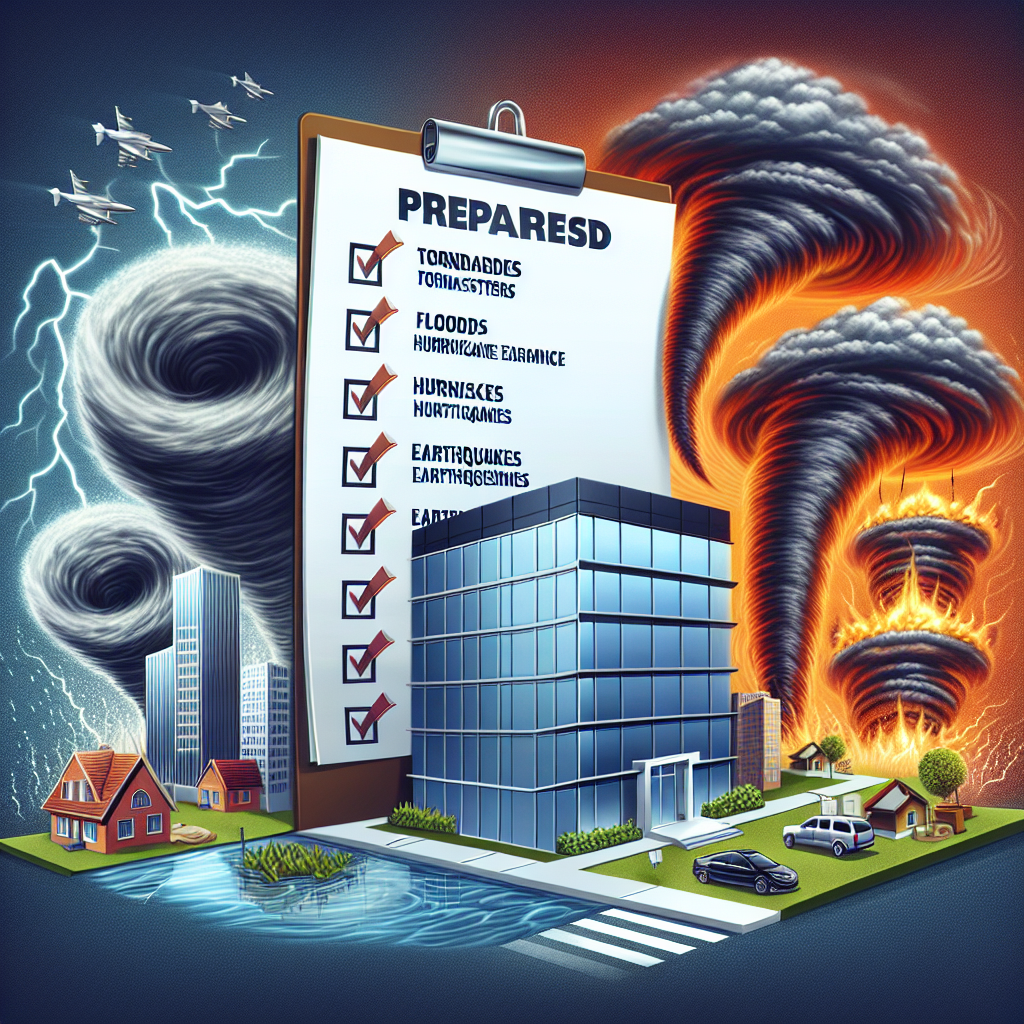Your cart is currently empty!
Preparing Your Business for Natural Disasters: A Disaster Recovery Checklist

Natural disasters can strike at any time, leaving businesses vulnerable to significant damage and loss. From hurricanes and tornadoes to earthquakes and floods, these events can disrupt operations, destroy property, and impact the bottom line. To ensure your business can withstand the effects of a natural disaster and recover quickly, it’s essential to have a disaster recovery plan in place. Here is a checklist to help you prepare your business for potential disasters:
1. Assess Risks: Start by identifying the potential natural disasters that could affect your business based on your location. Consider the likelihood and severity of each event, and assess how it could impact your operations, assets, and employees.
2. Create a Plan: Develop a comprehensive disaster recovery plan that outlines the steps to take before, during, and after a natural disaster. Include details on emergency response procedures, communication protocols, evacuation routes, and contingency plans for essential business functions.
3. Backup Data: Protect your business’s critical data by regularly backing it up and storing copies in secure offsite locations. Consider using cloud storage or external hard drives to ensure you can access important information in the event of a disaster.
4. Secure Facilities: Take steps to safeguard your business’s physical assets, such as buildings, equipment, and inventory. Implement measures to reinforce structures, secure loose items, and protect against water damage, fire, or other hazards.
5. Insure Assets: Review your insurance coverage to ensure it provides adequate protection against natural disasters. Consider purchasing additional policies or riders to cover specific risks, such as flood or earthquake damage, that may not be included in standard policies.
6. Train Employees: Educate your employees on the disaster recovery plan and their roles and responsibilities in the event of an emergency. Conduct regular training drills and workshops to ensure everyone knows what to do when disaster strikes.
7. Communicate with Stakeholders: Establish communication channels with employees, customers, suppliers, and other stakeholders to keep them informed during a natural disaster. Provide updates on the situation, evacuation procedures, and business continuity plans to minimize confusion and uncertainty.
8. Test and Update Plan: Regularly test and update your disaster recovery plan to ensure it remains effective and relevant. Conduct mock drills, tabletop exercises, and scenario simulations to identify any gaps or weaknesses that need to be addressed.
By following this disaster recovery checklist, you can better prepare your business for natural disasters and mitigate their impact. By taking proactive steps to protect your assets, secure your facilities, and train your employees, you can increase your chances of surviving a disaster and recovering quickly. Remember, it’s not a matter of if a natural disaster will strike, but when – so don’t wait until it’s too late to prepare.

Leave a Reply